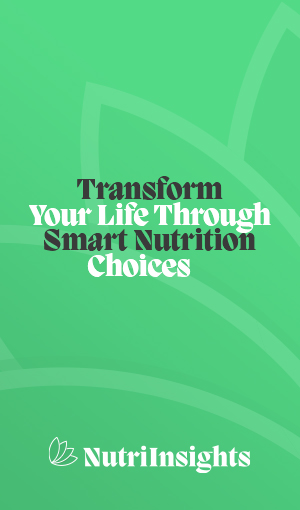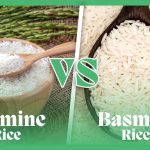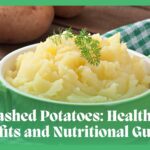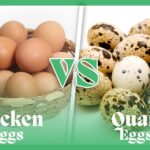In the flavorful world of spaghetti and pasta, there exists a humble yet nutritionally rich vegetable that is a substitute for the traditional pasta for health-conscious individuals.
Today, we unpeel the hard shell of the unassuming Spaghetti squash and discover the abundance of nutrients hidden among its intricate strands.
Join us as we explore the nutritional wonders of this bright yellow vegetable!
What is Spaghetti squash?
Spaghetti squash or winter squash is a large yellow, oblong, hard-shelled food often used as a substitute for pasta. This early autumn vegetable belongs to pumpkin, zucchini, and other types of squash family and has a mild, sweet flavor. Native to the Americas, spaghetti squash generates long, thin strands used as a low-calorie option for pasta.
The Library of Congress states that Squash crops are some of the oldest crops dating back to 10,000 years in Mexico, with little to no fluctuations in their popularity.

Nutrient composition:
Energy:
Winter squash is a low-calorie food; 100 grams of it yields only 49 kilocalories with its high water content (98.7 g).
Carbohydrates:
100 grams of spaghetti squash provides 6.26 grams of carbohydrates with a fairly good amount of fiber (1.4 grams). The natural sugar content is slightly above 2 grams.
Since it is an alternative to pasta, this vegetable spaghetti has a low glycemic index and high dietary fiber. Its consumption may decrease your overall intake of carbohydrates, thereby making it an excellent choice to incorporate into your everyday diet.
Protein:
Spaghetti squash might not be your go-to option for protein, however, its amino acid composition is of high quality. An amino acid lysine, usually lacking in other vegetables, is high in winter squash (1).
Total fats:
Winter squash contains only 2.79 grams of fats in 100 grams, that mainly come from polyunsaturated and monounsaturated fats.
Vitamins and minerals:
Spaghetti squash is home to essential vitamins and minerals such as vitamins A, B, C, E, and K and minerals like calcium, magnesium, phosphorus, potassium, and sodium.
| Nutrients 100g | Amount |
|---|---|
| Proximate composition | |
| Water | 98.7 g |
| Calories | 49 kcal |
| Protein | 0.65 g |
| Total fats | 2.79 g |
| Saturated fats | 0.78 g |
| Monounsaturated fats | 0.95 g |
| Polyunsaturated fats | 0.89 g |
| Carbohydrates | 6.26 g |
| Dietary fiber | 1.4 g |
| Sugars | 2.45 g |
| Minerals | |
| Calcium | 21 mg |
| Iron | 0.33 mg |
| Magnesium | 11 mg |
| Phosphorus | 14 mg |
| Potassium | 114 mg |
| Sodium | 139 mg |
| Zinc | 0.19 mg |
| Copper | 0.034 mg |
| Selenium | 0.3 µg |
| Vitamins | |
| Vitamin C | 3.4 mg |
| Thiamine (B1) | 0.037 mg |
| Riboflavin (B2) | 0.022 mg |
| Niacin (B3) | 0.785 mg |
| Panthotenic acid (B5) | 0.6 mg |
| Vitamin B6 | 0.112 mg |
| Folate | 8 µg |
| Choline | 7.5 mg |
| Vitamin A | 17 µg |
| Beta carotene | 62 µg |
| Alpha carotene | 15 µg |
| Vitamin E | 0.41 mg |
| Vitamin K | 3.1 µg |
| Cholesterol | 2 mg |
Role in human nutrition:
With its abundance of nutrients, spaghetti squash provides a myriad of health benefits. Let’s discuss all of them one by one:
Aids in weight control:
Spaghetti squash is a low-calorie food with decent dietary fiber that may help reduce weight. Fiber forms bulk in the stomach slows digestion, and keeps you full for a long time. So those aiming to shed extra weight may add this winter vegetable into their weight loss diet plan.
Aids in gut health:
The dietary fiber content of spaghetti may not be as much as other vegetables; however, its fair amount of fiber helps keep the gut healthy. Good colon health may prevent hemorrhoids, diverticulitis, colon cancer, and other gut-related disorders.
Helps prevent cancer:
Beta-carotene; a pigment that imparts a yellow color to the squash acts as an antioxidant that neutralizes free radicals, thereby protecting the cell from damage including cancer cells. The decent amount of vitamin C in winter squash also possesses anti-oxidant qualities.
Apart from that, cucurbitacins in squash have been shown to kill cancer cells in the preliminary studies; however, further investigation is required.
Maintains teeth health:
Spaghetti squash contains a good amount of vitamins A and C responsible for oral health. Vitamin C maintains gum health to prevent tooth loss, while Vitamin A keeps salivary glands and mouth tissues healthy. Furthermore, its low starch and sweet content make it less likely to contribute to tooth decay.
Keeps bones strong:
Spaghetti squash contains nutrients that help keep bones strong and healthy. Calcium, a mineral particularly essential for healthy bones, muscles, and teeth has a decent amount in the squash. Another mineral, magnesium, found in the winter squash, keeps proper bone structure and prevents osteoporosis.
Keeps eyes healthy:
The vitamins A and E in spaghetti squash help keep eyes in check and protect them from the oxidative damage that results in age-related macular degeneration.
Improves memory:
The pool of B vitamins found in spaghetti squash helps improve memory and transfer messages from one area to another. In addition, squash helps keep blood sugar in control, preventing it from leading to Alzheimer’s.
Keeps blood sugar in control:
In comparison with regular pasta that brings a sudden spike in the blood sugar level, substituting it with spaghetti squash may keep the blood glucose in control. 100 grams of it only provides 6.26 grams of carbohydrates with a fair amount of fiber that keeps the blood sugar in check.
So, consuming this low-calorie pasta with some tomato sauce and cheese is a healthy and nutritious option to keep your health and well-being in check.
Keeps heart healthy:
A crucial vitamin found in spaghetti squash called pantothenic acid or B5 is responsible for keeping the heart healthy and preventing heart inflammation.
For a person above 19 years of age, 1 cup of it provides 11% of the recommended daily allowance. Studies have confirmed that adding spaghetti squash to your diet is a great step to protect yourself from heart-related diseases.
Side effects:
Aside from all the benefits spaghetti squash has to provide, let’s talk about some side effects consuming it may cause:
Allergies:
Although rare, reactions to related foods such as zucchinis and pumpkins have been registered. So, if you experience hives, itching, swelling, digestive issues, or anaphylactic shock after consuming squash, seek emergency care immediately.
Low calorie:
Not really a side effect, but spaghetti squash is a low-calorie food. Although beneficial for weight loss, very low-calorie diets may lead to more complications. So, adding healthy and good-calorie foods with spaghetti squash is a good idea.
Spaghetti squash vs pasta:
Since spaghetti squash is an alternative to pasta, let’s compare how different they are nutritionally.
100 grams of cooked spaghetti provides 158 kcal; way higher than 49 kcal spaghetti squash provides in this amount. The protein content of traditional pasta is higher but the amino acid composition of the spaghetti squash is high quality making it slightly healthier.
The fat content of the pasta mainly comes from the saturated fats as opposed to the spaghetti squash, whose fats consist mainly of polyunsaturated fats. The macronutrient comparison of spaghetti squash and traditional pasta is discussed in the following table:
| Nutrients | Spaghetti squash | Pasta |
|---|---|---|
| Calories | 49 kcal | 158 kcal |
| Carbohydrates | 6.26 g | 30.9 g |
| Dietary fiber | 1.4 g | 1.8 g |
| Protein | 0.65 g | 5.8 g |
| Fats | 2.79 g | 0.93 g |

How to prepare?
Before cooking the squash, it needs to be cut and sliced carefully to avoid any injuries as they are hard to cut. Place the squash on a thick towel and slice it lengthwise. The seeds are as nutritious as the flesh, so you can roast them after scooping them out for extra protein and magnesium.
Cook your spaghetti squash and shred the flesh using a fork. Use the shredded flesh as an alternative to pasta in the following delicious ways:
- Serve the shredded flesh with some marinara sauce on top
- Add to your favorite burrito recipes along with meat and salsa
- Top the shreds with your favorite pizza toppings and bake
- Add into soups or curries along with mushrooms, onions, and shredded chicken
- The seeds can also be used as a salad topping by roasting them
- Add your favorite vegetables like broccoli and serve it as a low-calorie pasta
Best time to eat and store:
The best time to harvest and eat spaghetti squash is the autumn; however, they are available in the market all year around. Choose a squash that is firm and heavy, and has no soft spots or blemishes. A ripe squash is known to be hollow when tapped.
Do not pick the squash with its stem removed, as the stem protects the vegetable from bacteria and keeps the moisture.
After picking the best spaghetti squash in the market, store it in a cool and dry place. Uncooked and whole squash can be stored for up to 3 months at 55 to 60 °F. However, cooked squash should be consumed in three to five days with refrigeration. Cooked spaghetti squash can be stored in the freezer in an airtight container for up to one year.
As we conclude our investigation of this unassuming yet nutritionally rich vegetable, we can say that it goes way beyond just being a substitute for traditional pasta. Its low-calorie and high nutrient content makes it a necessity to be included in our unappealing everyday diet. In the end, after uncovering all the health benefits the spaghetti squash has to offer, we can say that no wonder it is a nutritional wonder!









